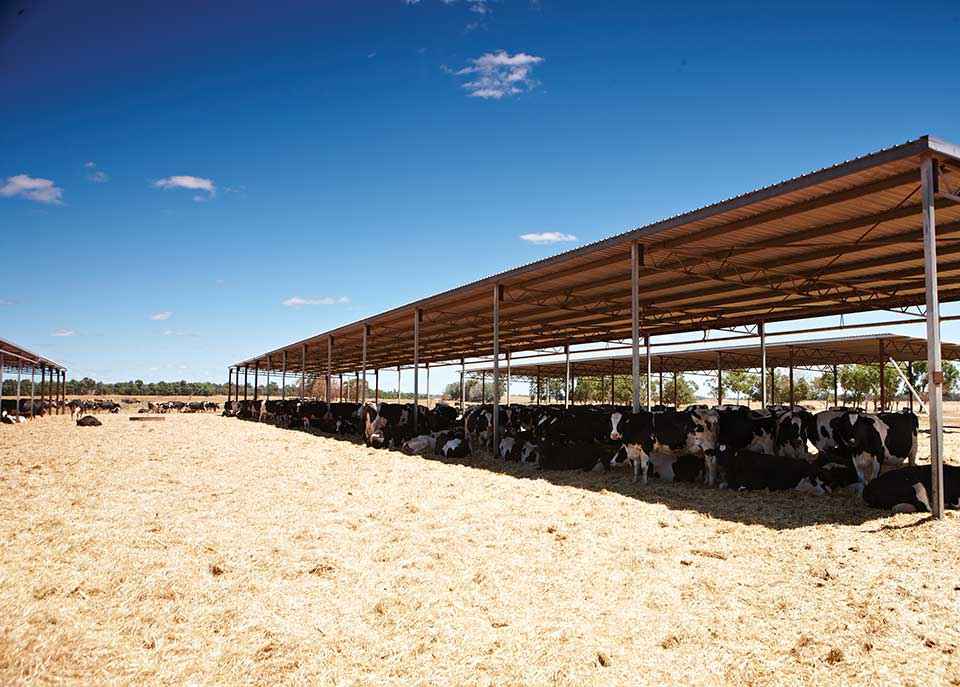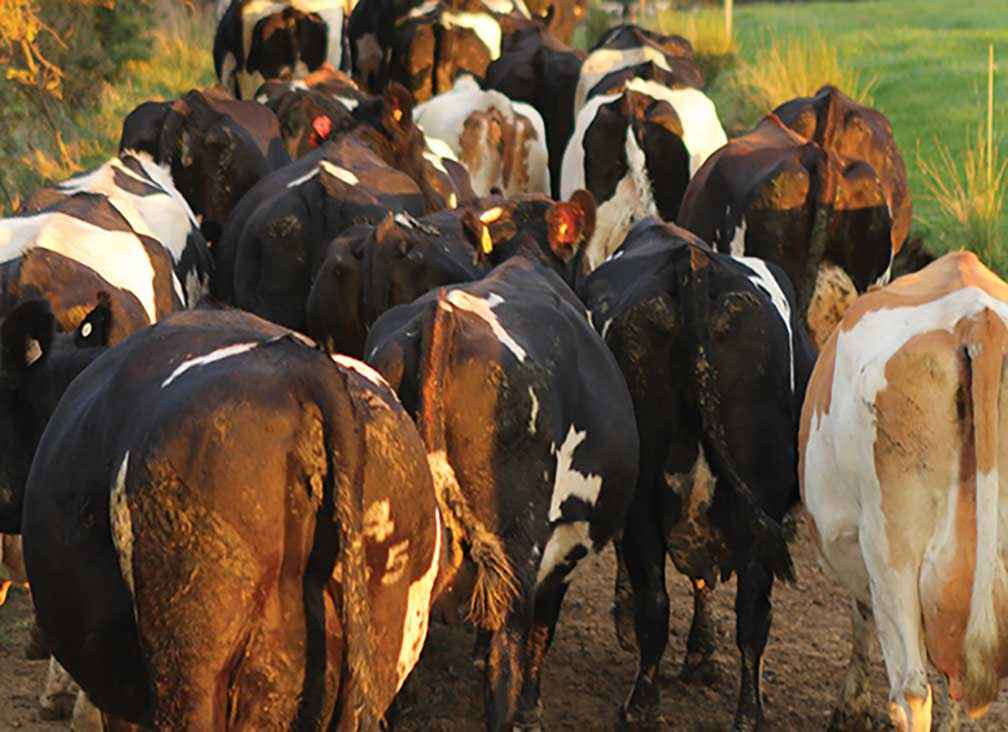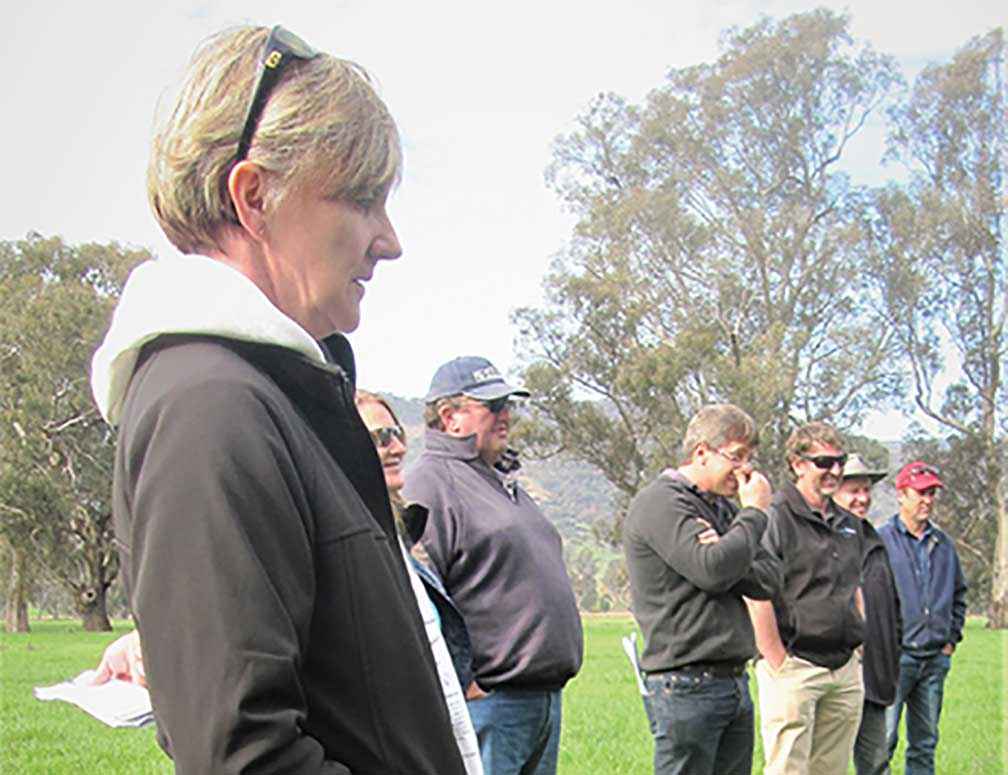Victorian Landcare Magazine - Winter 2017, Issue 69

What will the climate in Gippsland be like in 2040 and how will different dairy farming systems respond to a future climate?
These are just two of the questions that the Dairy Businesses for Future Climates research project set out to answer when research began in 2013. At the completion of the research we have some answers and a lot to think about in terms of farming in the future.
The research took three real farms, in Gippsland, South Australia and Tasmania, projected the predicted 2040 climate on them and looked at their profitability if they continued to farm in the same way as today, simplified the current system, adapted it or intensified it.
Currently the central Gippsland farm milks 350 cross bred, spring calving cows. The farm has a stocking rate of 3.2 cows per hectare and each cow produces an average of 395 kilograms of milk solids per year.
The research showed that farms in all three regions of Australia would be less profitable in 2040 and that no one pathway into the future is superior to another. All have pros and cons. With climate variability here to stay, management and farmer skill in adapting from one season to the next will be vital.
"The research took three real farms, in Gippsland, South Australia and Tasmania, projected the predicted 2040 climate on them and looked at their profitability if they continued to farm in the same way as today, simplified the current system, adapted it or intensified it."
Modelling indicates that in 2040 the climate in central Gippsland will have warmed by 1.4oC with rainfall declines up to 12 per cent. This would be similar to the current climate at Cobden in south west Victoria, though warmer, or Tallangatta in north east Victoria, without the temperature extremes.
Rainfall events are predicted to vary from year to year and to occur in fewer, larger events, with longer dry spells in between. Extreme weather events are predicted to continue with intense rainfall, drought, bush fires and wind events identified as concerns to Gippsland farmers surveyed
in this research.
In 2040, March will have maximum temperatures similar to January today, and November will have maximum temperatures similar to December. Some might say that summer is getting longer.
The growing season for pastures will shift under 2040 climate change scenarios creating feed challenges. Gippsland dairy farms rely on pasture production with pasture consumed by cows being a key profit driver.
Pasture growth rates from May to September are likely to be higher in the 2040 climate, but lower during the remainder of the year. This results in a lower proportion of pasture being directly grazed and more conserved and fed back to cows unless farming systems are altered.
"With climate variability here to stay, management and farmer skill in adapting from one season to the next will be vital."

Above: Several wet winters followed by six months of drought conditions over the summer of 2016 showed that Australian dairy farmers operate their businesses in some of the riskiest weather and climate patterns anywhere in the world.

Above: Dairy farmer Judy Johnson from Yarram was involved in the farmer groups that directed the future climates research.
A group of Gippsland farmers were involved in overseeing the project in Gippsland. They met regularly with researchers, checking in on results and modelling guiding the research effort.
Chris Hughes, a dairy farmer from Koonwarra, believes there’s much to be learnt from farmers in other areas who are dealing with climate changes that can be expected in Gippsland.
“We need to be adaptive and open minded about how we farm into the future. It won’t necessarily be the same as it has been in the past,” Chris said.
What does the changing climate mean for Gippsland dairy farms?
Judy Johnson, a dairy farmer from Yarram who was a member of the farmer group that directed the research, believes that the results show that climate change is manageable in Gippsland.
“I see many factors that will have a greater impact on our business. We have been reminded in the past year that milk prices will have a greater impact on us. We need to be adaptable and plan for extreme situations, we must make sure we have game plans in place for extreme weather events, they will keep coming at us,” Judy said.
The Dairy Businesses for Future Climates project was a collaboration between the Australian Government, Dairy Australia, The University of Melbourne, Tasmanian Institute of Agriculture, D-ARM Consulting, and dairy farm managers in three regions of Australia.
Gillian Hayman was previously a Project Manager for Dairy Australia. Information sheets and video clips are on Dairy Australia’s climate tool kit website www.dairyclimatetoolkit.com.au or contact Gillian Hayman at ghayman@dcsi.net.au